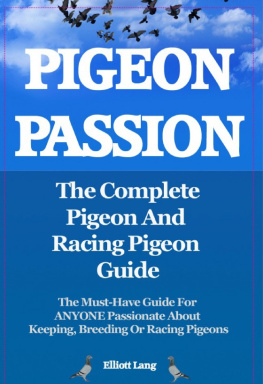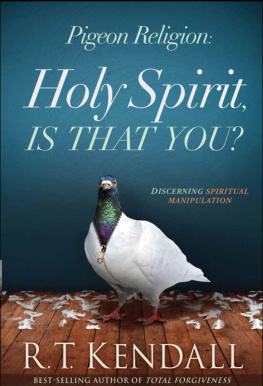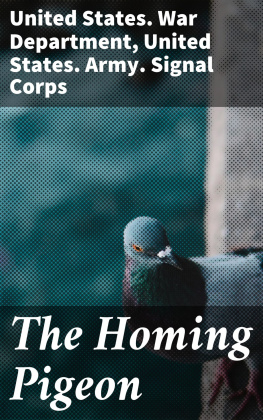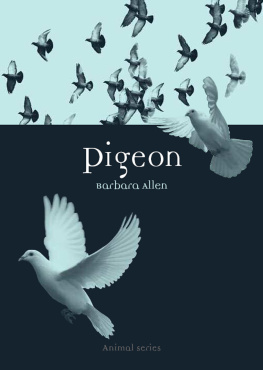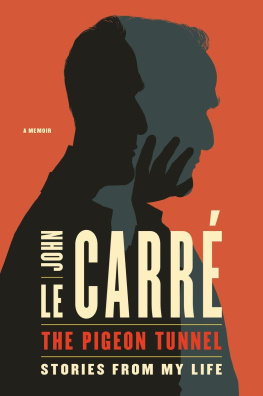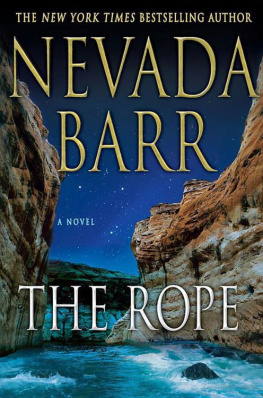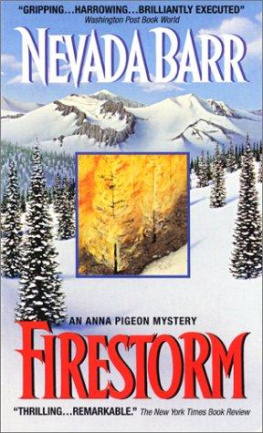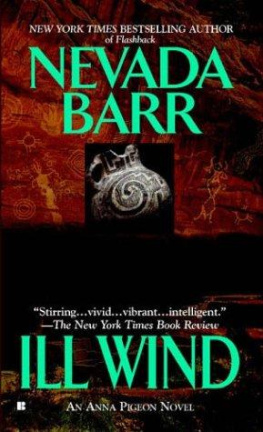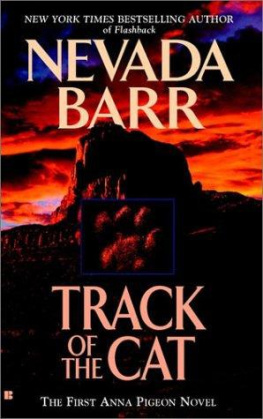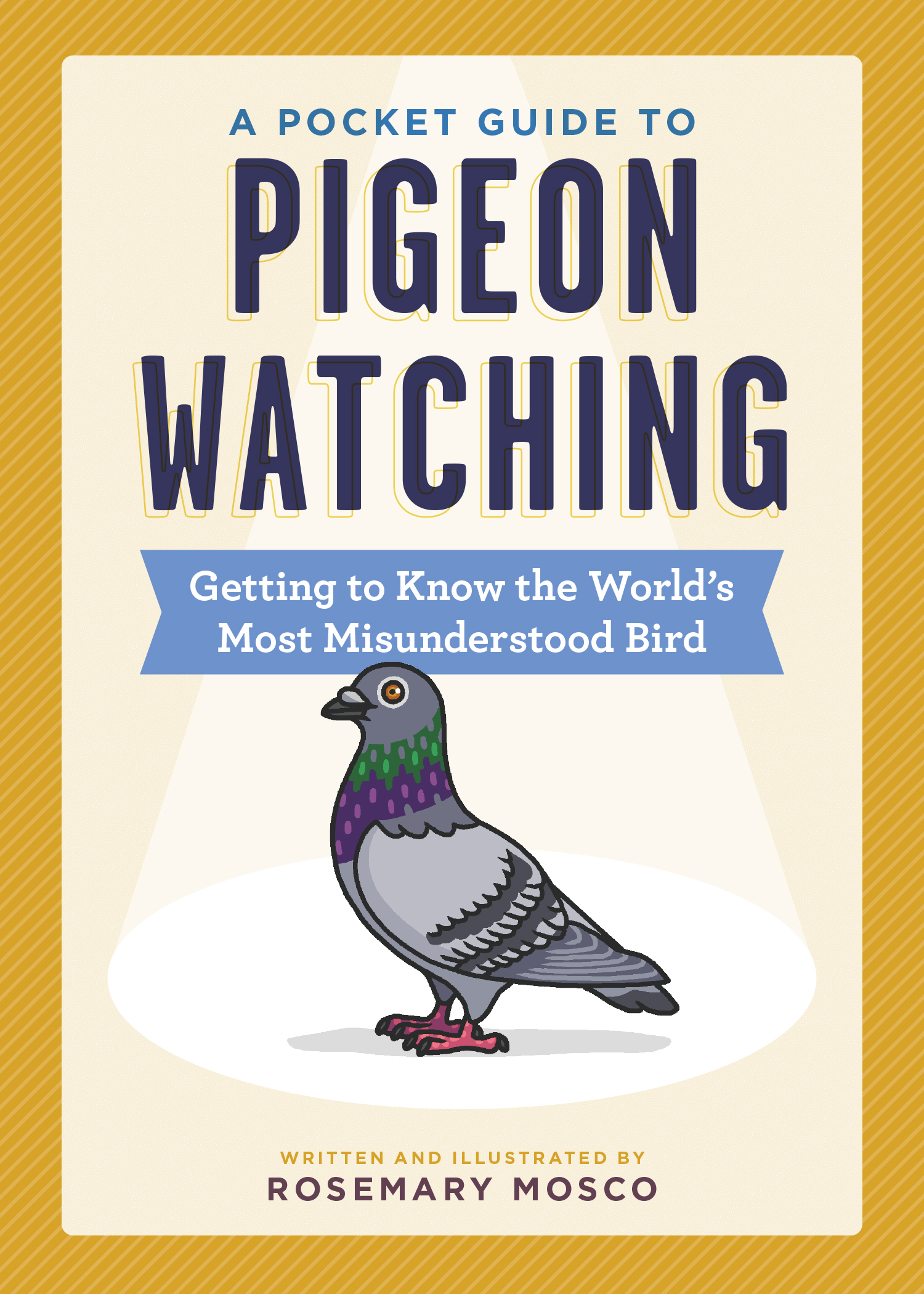
A POCKET GUIDE TO
PIGEON WATCHING
Getting to Know the Worlds Most Misunderstood Bird

ROSEMARY MOSCO
Workman Publishing
New York
To my dad, Vincent Mosco, who grew up in a Manhattan tenement and only knew three kinds of birds: the gray ones, the little brown ones, and seagulls. Dad, thanks for helping me see the connections that make the world work. Here are some more connections for you.

Contents

Introduction
Why Watch Pigeons?

I will show you my pigeons! Which is the greatest treat, in my opinion, which can be offered to [a] human being.
Charles Darwin
How do you feel about pigeons? Maybe you hate them. Tons of people do. Perhaps you loathe their dusty-looking feathers, or the way they swarm the sidewalks, or the fact that theyre allowed to poop anywhere they want, but YOU always have to find a bathroom.
Or maybe youre just apathetic about pigeons. Thats a common sentiment, too. For most of us, pigeons are mundane fixtures of life; theyre mere flickers of movement in the background. Pigeons arent flashy or vividtheyre gray, white, or red-brown, the colors of metal, concrete, and dirt. Theyre not very loud. They can be pests, but they dont sting or bite. Nobody shows up on the nightly news with dramatic gashes from a pigeon attack. Pigeons are just sort of there.
But these birds are an important part of the background. Youll find them almost everywhere, on every continent but Antarctica, from the northern tip of Norway to the southern tip of Chile and on lonely islands out in the middle of the ocean. They coo, peck, and nest in most of the worlds towns and cities. In fact, theyre such a critical part of the metropolitan scenery that movie directors go out of their way to include them in urban shots. For the climactic scene of the movie Home Alone 2: Lost in New York, animal handlers carefully trained 500 pigeons to sit, stay, and fly to hidden cages outside the cameras view. Only about 200 birds were present in any given shot, and handlers regularly rotated out the birds so that Hollywoods rigorous filming schedule wouldnt tire them.
Theres a Pigeon Movie Database
Want to know more about pigeons in movies? The Pigeon Movie Database (PMDb) is a truly astonishing project that tracks pigeons appearances in films and discusses their symbolism. It also pays tribute to film characters that are friendly to pigeons, including the birdseed seller from Mary Poppins and Roy Batty from Blade Runner. Visit it at pigeonmoviedatabase.com.
How did pigeons become so ubiquitous that movie directors would go to this much trouble? The answer will shock you. Until recently, pigeons werent just extras in the movies of our lives. They were the stars. People all over the world kept them as pets, held pigeon beauty contests, ate them in gourmet dishes, and pitted them against each other in high-stakes races. (In many places, these traditions persist; in others, theyre on the rise. There are probably pigeon keepers near you.)

Pigeons are superstars.
Throughout much of the history of warfare, soldiers strapped canisters with important messages to the legs, bellies, or backs of pigeons. When the birds braved artillery fire and gas to successfully deliver their intel, people rewarded them with prestigious medals. Wherever pigeon keepers traveled, they carted their birds with them. Some pigeons flew the coop and went feral; thats why you can find them in places they didnt originally inhabit, like North and South America and Australia. Pigeons are everywhere, and people are to blame.
Some of our most notable historical figures were pigeon-obsessed. The Mughal emperor Akbar treasured his birds and used them to impress his guests. Who needs a glass of fine wine when you can feast your eyes on a pigeon? The great evolutionary theorist Charles Darwin loved them, too. He kept and bred his own flock, and they helped inspire his ideas about evolution.
A Pigeon by Any Other Name
Here are a few non-English names for the pigeon:
Afrikaans: Tuinduif
Arabic: 
Chinese: 
Dutch: Rotsduif
French: Pigeon biset
German: Felsentaube
Hindi: 
Indonesian: Merpati batu
Italian: Piccione selvatico
Persian: 
Scots: Calman creige
Spanish: Paloma brava
Swahili: Njiwa-mjini
Thai: 
And then theres the case of Nikola Tesla, famous inventor and lovelorn pigeon nurse. Tesla fed crumbs to pigeons from the window of his home at New Yorks Hotel Pennsylvania. Whenever a sick pigeon would appear at his sill, hed capture it and send it to the ASPCA Animal Hospital for care. His relationship with one particular white bird was the love story of Teslas life, according to his biographer John J. ONeill. Yes, I loved that pigeon, Tesla told ONeill. I loved her as a man loves a woman, and she loved me. As long as I had her, there was a purpose in my life. (Which is... certainly something.) When the pigeon passed away, Tesla felt that purpose leave him.
Whats so special about pigeons, and why do people fall head over heels for them? This book answers the question. Youll discover that pigeons are behaviorally bizarre (they feed milk to their young), anatomically fascinating (they have three eyelids and lungs that dont expand), and historically compelling (they were so deeply involved in class struggles that they could have starred in Les Misrables). Youll also gain all the tools you need to become a pigeon watcher. If youre a pigeon hater, this book could change your mind. And who knowsmaybe youll even fall in love.
10 Reasons to Watch Pigeons
1) Its free.
2) Pigeons are often easy to find, especially in urban areas where other wildlife is scarce. You can watch them on long drives, during boring commutes, or on lunch breaks. If youre in a dull meeting, take a peek outside and enjoy the soap opera of pigeon life.
3) Pigeons are gentle and safe to watch, so long as you look out for their poop. They wont attack you, screech at you, or spray you with a noxious scent. (If they do, you have misidentified your pigeons.)
Next page

